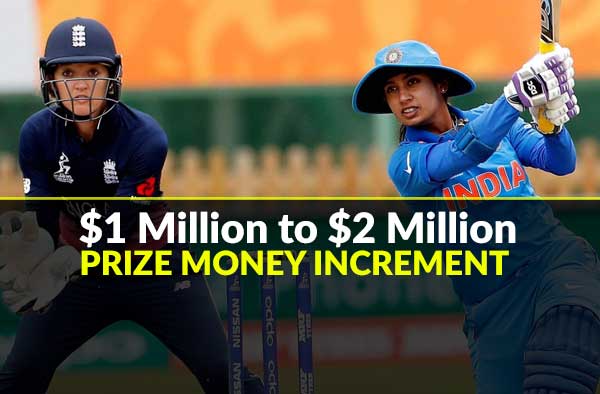2017 was an unprecedented year for women. The #MeToo movement spread like wildfire. Time magazine declared “The Silence Breakers” as Person of the Year. Cricket meanwhile was undergoing a revolution of its own in the women’s game. Cricket Australia described 2017 as a “ground-breaking year for women and girls” in its media release on December 20, 2017. In no particular order, here are the 4 key breakthroughs of 2017 in women’s cricket.

1. ICC’s commitment:
ICC pledged to increase the development of women’s cricket in order to bring their game on par with that of the men in 15 years. ICC Chief Executive David Richardson while commenting on the changes said “We think the Women’s World Cup this summer will be a turning point in the history of the game. There is growing interest globally in women’s sports and we want cricket to be front and center of this and lead by example.” The prize money for the 2017 Women’s World Cup was increased from $1m to $2m. Spidercam, now ubiquitous in men’s cricket, made its debut in women’s cricket at the World Cup. 10 of the matches were televised while the remaining 21 matches were made available online. This led to increased jobs in the form of a commentators’ panel including the likes of Charlotte Edwards, Anjum Chopra, Lisa Sthalekar and Melanie Jones. The tournament captured 50 million eyeballs globally.
The audiences at the grounds cut across genders: the ticket sales reported a 50-50 split.
2. Man with a vision:
The man behind the splendid 2017 Women’s World Cup is the former South African pace bowler, Steve Elworthy. He was also appointed by the ECB as the tournament director of the 2017 Champions Trophy and the 2019 World Cup in men’s cricket. He is known for organizing fan friendly tournaments and hence was a wise choice for the Women’s World Cup. Elworthy and his team ensured the facilities and the logistics were of the topmost quality. For example, all flight arrangements were business-class. To attract a key demographic, the under-16s, 10,000 bats and balls were distributed. Such was the success of the World Cup that it has made the likelihood of cricket at the Olympics a possibility. Its inclusion will provide greater funding through the national governments.
3. Australia the trail-blazer:
Australia has been at the forefront of the transformation of women’s cricket. All of the WBBL2 matches, held in 2016, were live-streamed (save for those which were telecasted on the telly) on CA’s website. Over 4.6 million online viewers tuned in. The ongoing WBBL3 has also seen a huge rise in the audience. The match involving Sydney Sixers and Melbourne Stars which saw the highest ever total (242) made in either the men or women’s edition logged an average national audience of 422,500 viewers, a 59% increase from the WBBL2 average. Every single match of the Ashes also was live-streamed and 256,000 fans watched the series online.
4. History pay agreement:
Cricket Australia came to a historic MOU with the Australian Cricketers’ Association. For the first time, a common agreement for men and women cricketers came into being. This means that both men and women will see equality in remuneration. This is a first in Australian sporting history. Average salaries of Australian’s women’s team are expected to rise by $100,000. Even players at the domestic level will see their wages increase by 128%. This will go a long way in making women’s cricket a viable profession with job security. It’s also an acknowledgement of their contribution towards the growth of the game in Australia and globally.
Here’s hoping the new year brings forth more such developments.
